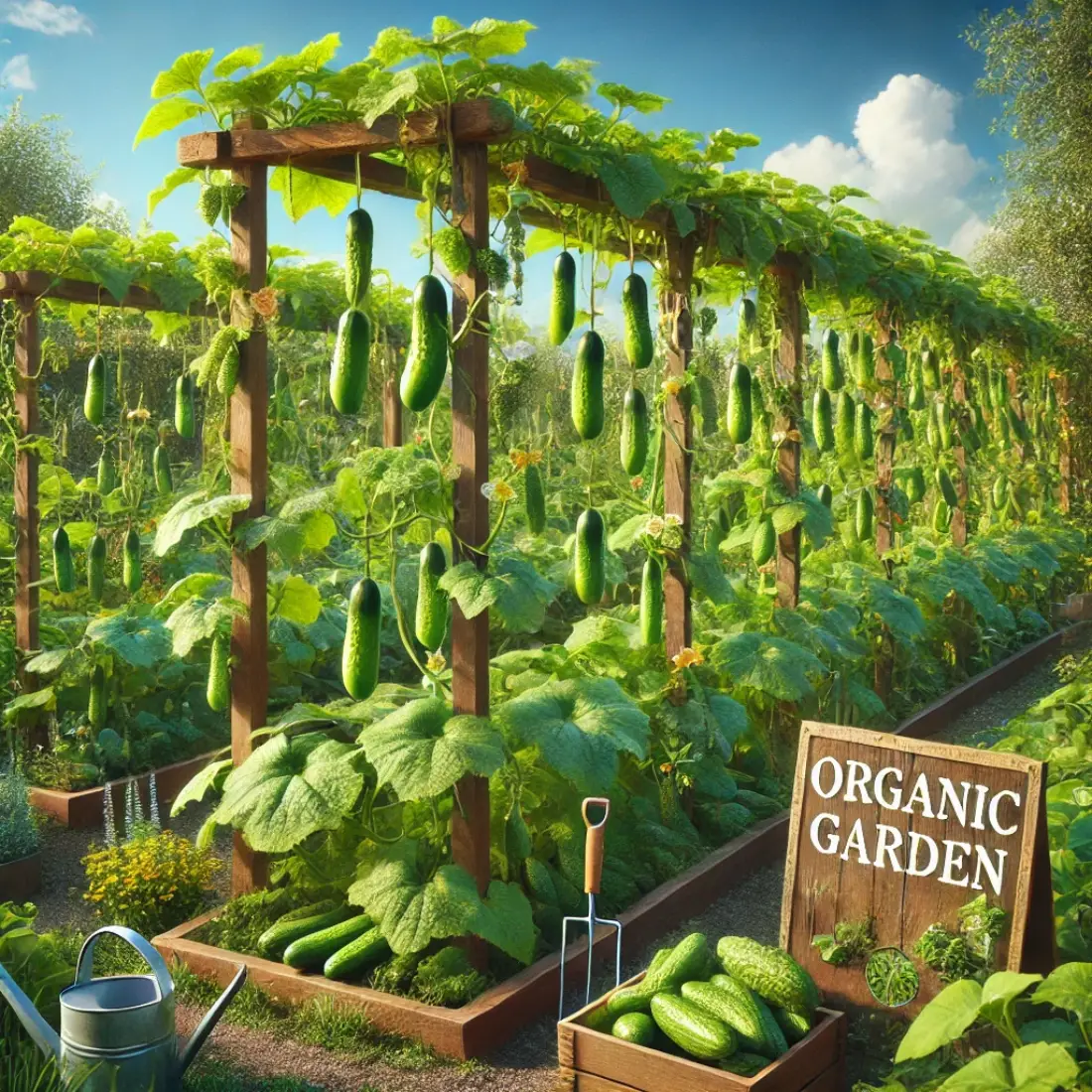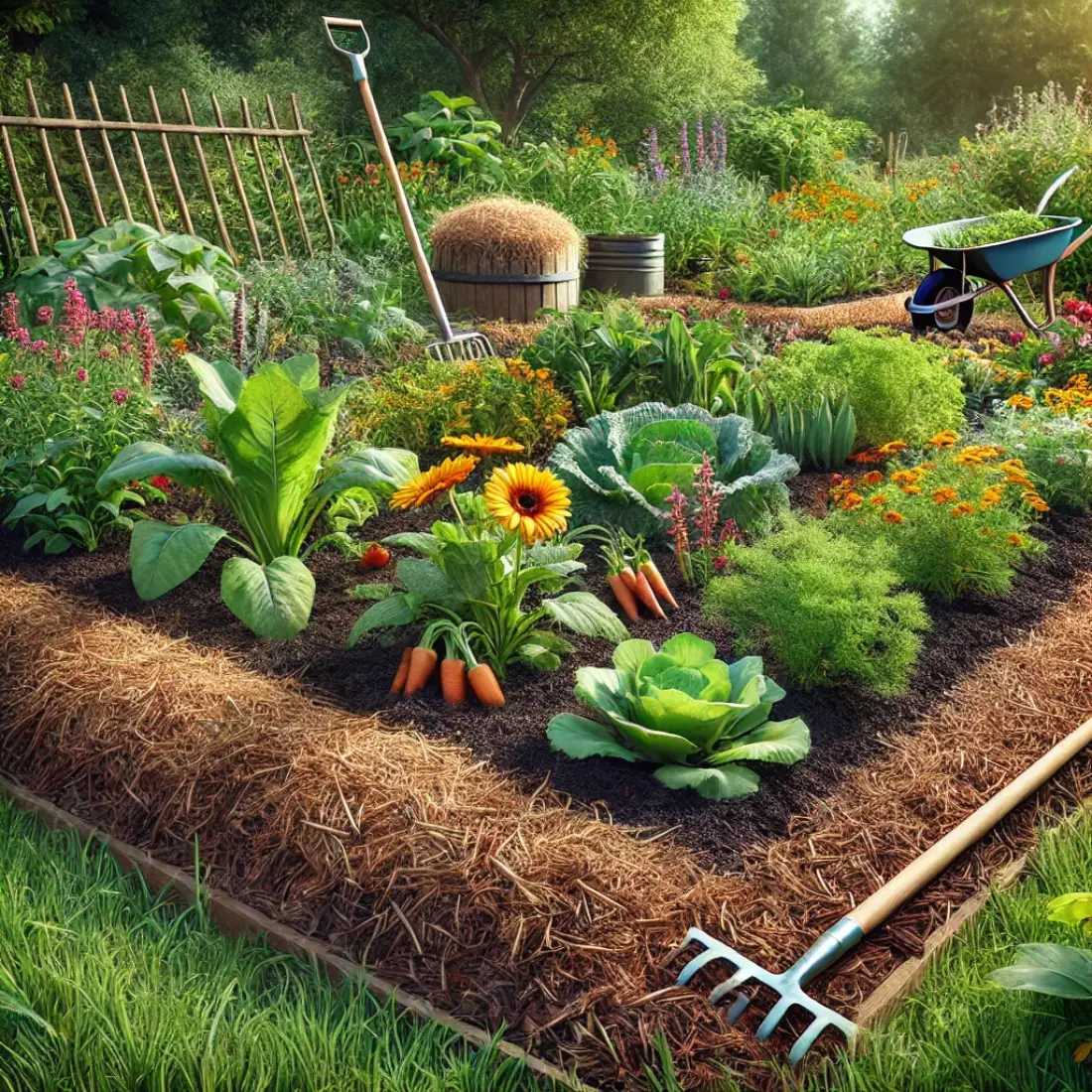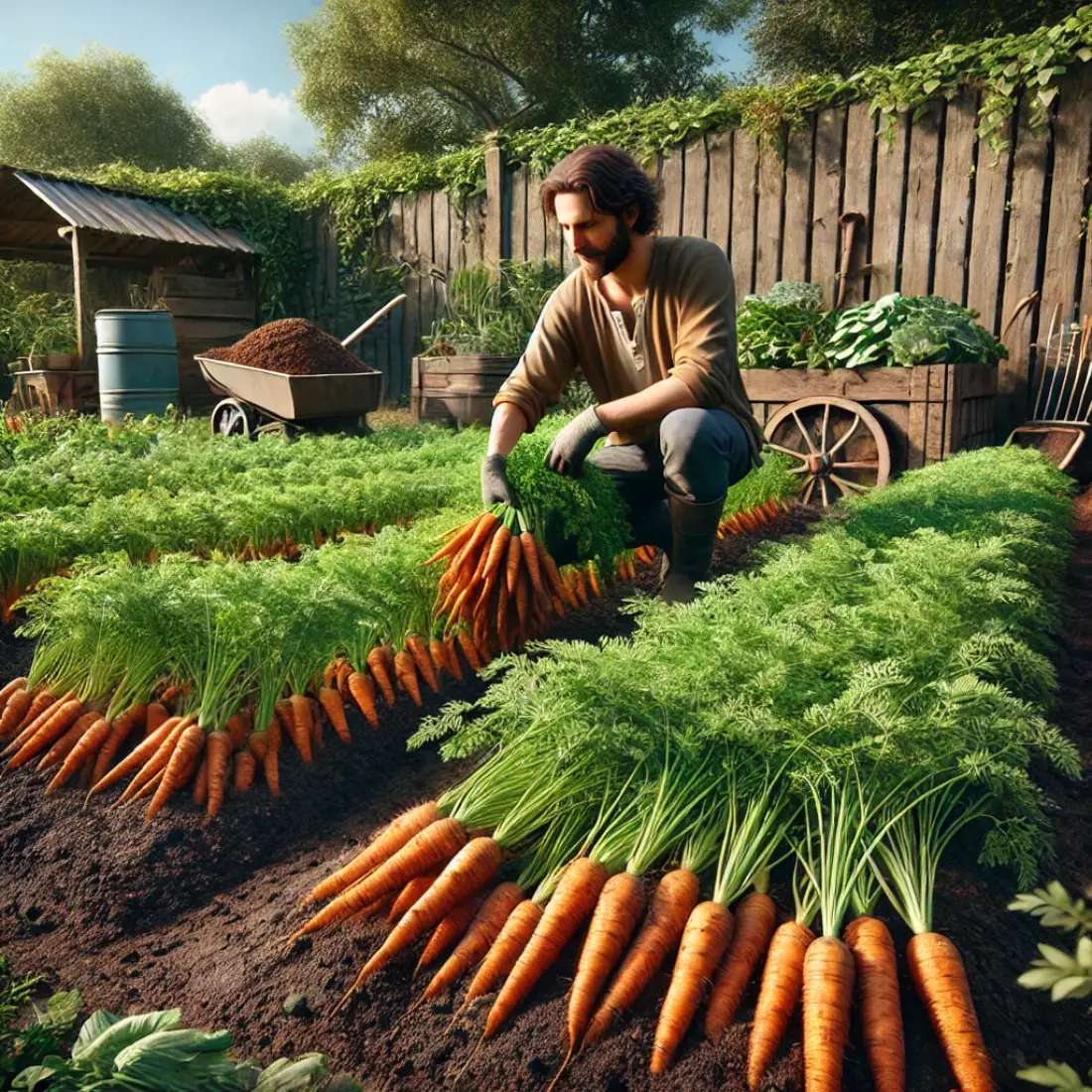Growing organic cucumbers is a fantastic way to enjoy fresh, pesticide-free produce straight from your garden. Not only are cucumbers easy to grow, but they also offer numerous health benefits and can be used in a variety of dishes.
- Understand the benefits of growing organic cucumbers.
- Learn about soil preparation and seed selection.
- Discover the best planting and watering techniques.
- Get tips on pest control and disease prevention.
- Learn how to and store your organic cucumbers.
Choosing the Right Organic Cucumber Varieties
Selecting the right cucumber varieties is crucial for a successful organic garden. Here are some key factors to consider:
Disease Resistance: Choosing disease-resistant varieties helps reduce the need for chemical treatments. Look for cucumbers that are resistant to common diseases like powdery mildew, downy mildew, and cucumber mosaic virus. Recommended varieties include ‘Marketmore 76’ and ‘Salad Bush’.
Growth Habits: Cucumbers come in two main types: vining and bush. Vining cucumbers, such as ‘Straight Eight’ and ‘Boston Pickling’, require support structures like trellises or cages, which save space and improve air circulation. Bush cucumbers, like ‘Spacemaster’ and ‘Bush Champion’, are more compact and suitable for container gardening or small spaces.
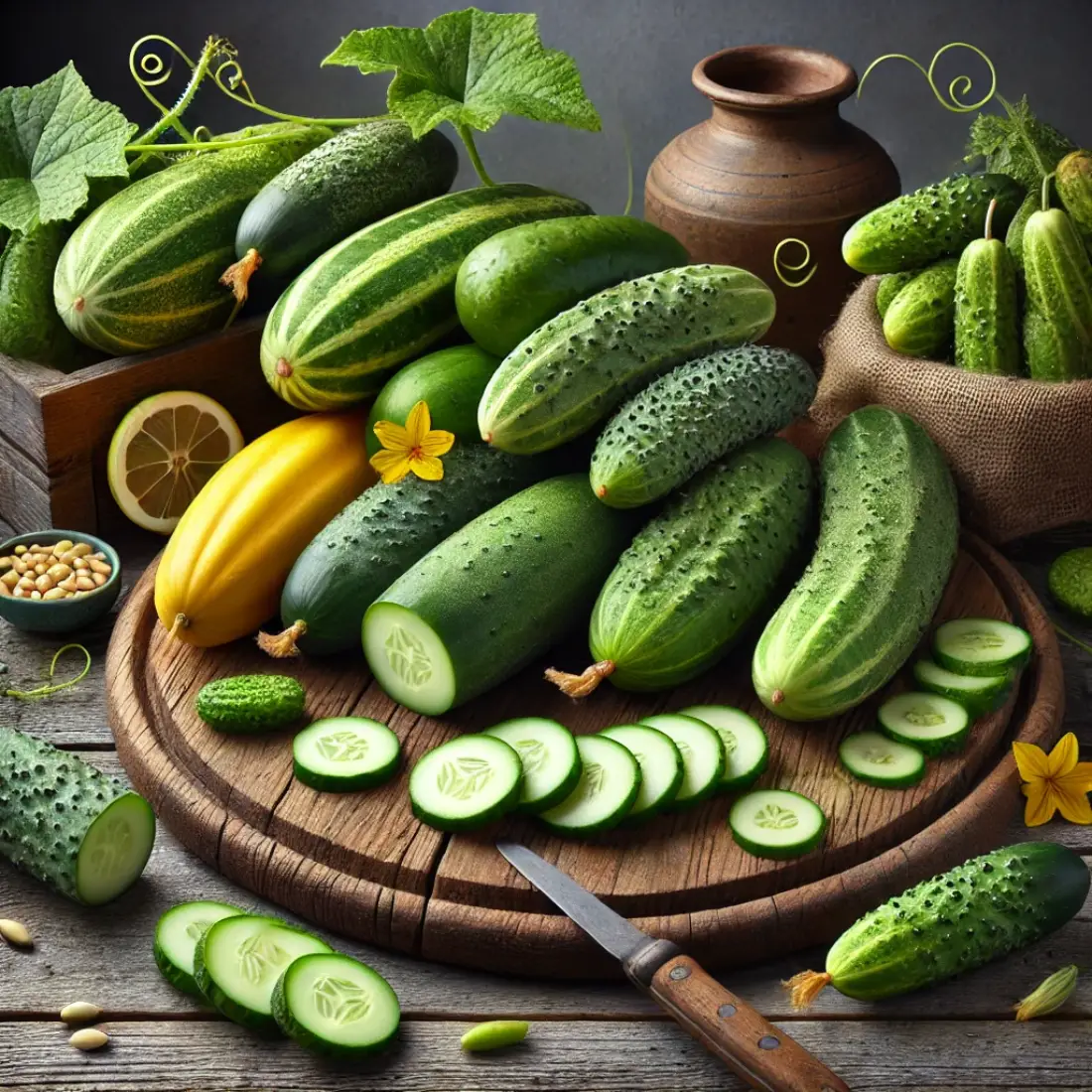
Fruit Type: Consider what you want to use the cucumbers for. Slicing cucumbers, such as ‘Sweet Success’ and ‘Diva’, are ideal for fresh eating due to their crisp texture and mild flavor. Pickling cucumbers, like ‘Calypso’ and ‘National Pickling’, are smaller with a firmer texture, making them perfect for pickling and preserving.
Heirloom vs. Hybrid: Heirloom cucumbers, such as ‘Lemon Cucumber’ and ‘Arkansas Little Leaf’, are open-pollinated and often have unique flavors and appearances. They can be saved and replanted each year, preserving genetic diversity. Hybrid cucumbers, like ‘Tyria’ and ‘Cool Breeze’, are bred for specific traits like higher yield and disease resistance, but they do not produce viable seeds for future planting.
Climate and Growing Season: Select varieties that match your local climate and growing season. For cooler climates, early-maturing varieties like ‘Early Pride’ are best. In warmer regions, heat-tolerant varieties such as ‘Poinsett 76’ thrive.
Additional Considerations: Personal preferences for taste and texture can influence your choice. Ensure that organic seeds are available for the chosen varieties. Some varieties are known for higher yields, which can be beneficial if you have limited space.
Soil Preparation for Organic Cucumbers
Proper soil preparation is essential for growing healthy and productive organic cucumber plants.
Test Soil pH: Cucumbers thrive in slightly acidic to neutral soil, with a pH range of 6.0 to 7.0. Conduct a soil test to determine the pH level of your garden soil. You can purchase a soil test kit from a garden center or send a sample to a local extension service for analysis.
Amend the Soil: Once you know your soil’s pH, amend it accordingly. If the pH is too low (acidic), add agricultural lime to raise it. If it’s too high (alkaline), incorporate peat moss to lower it. Additionally, ensure your soil is rich in organic matter by adding compost, aged manure, or leaf mold. Organic matter improves soil structure, fertility, and water retention.
Improve Drainage: Cucumbers prefer well-draining soil to prevent root rot. If your soil is heavy clay, improve drainage by mixing in coarse sand, perlite, or fine gravel. Raised beds can also enhance drainage and provide a more controlled growing environment.
Add Nutrients: Cucumbers are heavy feeders and require nutrient-rich soil. Before planting, work in a balanced organic fertilizer, such as a 5-5-5 blend, into the top 6-8 inches of soil. This ensures that essential nutrients like nitrogen, phosphorus, and potassium are readily available to the plants.
Mulch and Cover Crops: To further enrich your soil, consider planting cover crops like clover or buckwheat in the offseason. These crops add organic matter and nutrients when turned into the soil. Mulching with straw or grass clippings helps retain moisture, suppress weeds, and regulate soil temperature.
Soil Aeration: Aerate the soil by tilling or turning it over with a garden fork. This process loosens compacted soil, enhances root penetration, and improves oxygen flow to the roots.
Starting Seeds vs. Buying Seedlings
When starting an organic cucumber garden, you have the option to either start seeds yourself or purchase seedlings. Both methods have their advantages and considerations.
Starting Seeds
Pros:
- Cost-Effective: Seeds are generally cheaper than buying seedlings. A single packet can yield many plants.
- Variety Selection: Seed catalogs offer a wide range of cucumber varieties, allowing you to choose specific types suited to your garden’s conditions and your personal preferences.
- Control Over Growing Conditions: Starting seeds indoors lets you control the growing environment, such as temperature, light, and soil quality, leading to healthier plants.
Cons:
- Time-Consuming: Starting seeds requires more time and effort, including setting up seed trays, providing adequate light, and regular watering.
- Requires Space: You need enough indoor space with good lighting to start seeds, especially if you’re growing a large number of plants.
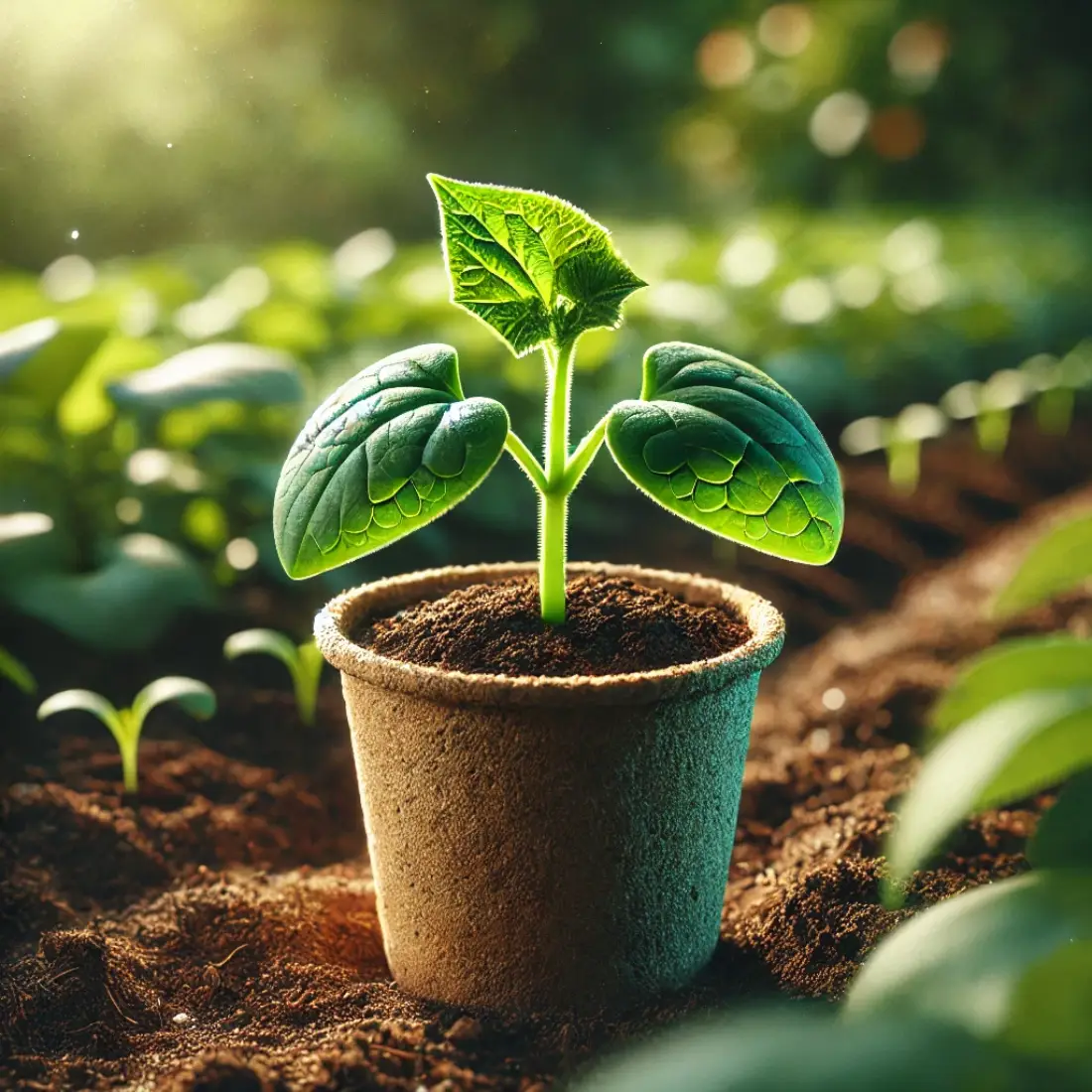
How to Start Seeds:
Choose the Right Time: Start seeds indoors 3-4 weeks before the last expected frost date.
Use Seed Starting Mix: Fill trays or pots with a light, well-draining seed starting mix.
Sow Seeds: Plant seeds about 1/2 inch deep. Keep the soil moist but not waterlogged.
Provide Light: Place trays under grow lights or in a sunny window. Cucumbers need about 12-14 hours of light daily.
Transplanting: When seedlings have 2-3 true leaves and the outdoor temperature is warm enough, harden them off by gradually exposing them to outdoor conditions before transplanting them into the garden.
Buying Seedlings:
Pros:
- Convenience: Seedlings are ready to plant, saving you time and effort compared to starting seeds.
- Instant Gratification: Seedlings give you a head start in the growing season, leading to earlier harvests.
- Less Risk: Fewer chances of issues like poor germination or damping-off disease, which can affect young seedlings.
Cons:
- Cost: Seedlings are more expensive than seeds.
- Limited Variety: Garden centers may have a limited selection of cucumber varieties.
- Quality Concerns: Purchased seedlings might be stressed from transport or have been grown in suboptimal conditions.
How to Buy Seedlings:
Choose Healthy Plants: Look for seedlings with strong stems, green leaves, and no signs of disease or pests.
Check the Roots: Healthy roots are white and well-developed. Avoid seedlings with root-bound or discolored roots.
Acclimate to Your Garden: Gradually acclimate purchased seedlings to outdoor conditions before planting them in the garden.
Transplanting Cucumber Seedlings to the Garden
Transplanting cucumber seedlings properly is crucial for their growth and productivity. Here’s a step-by-step guide to ensure a smooth transition from indoor growing to your garden.
Timing:
- After the Last Frost: Transplant cucumber seedlings only after the danger of frost has passed and the soil temperature is consistently above 60°F (16°C). This typically occurs in late spring.
- Seedling Readiness: Ensure seedlings have 2-3 true leaves and are sturdy enough to handle the move.
Hardening Off:
- Gradual Acclimation: Hardening off prepares seedlings for outdoor conditions. About a week before transplanting, place seedlings outside in a sheltered location for a few hours each day, gradually increasing exposure to direct sunlight and wind.
- Protection: Initially, keep seedlings in partial shade and protect them from strong winds. Gradually increase their time in full sun.
Preparing the Garden Bed:
- Soil Preparation: Ensure the garden bed is well-prepared with rich, well-draining soil. Incorporate compost or well-rotted manure to boost fertility.
- Spacing: For vining varieties, space plants 36-60 inches apart in rows 48 inches apart. For bush varieties, space them 24-36 inches apart. If using a trellis, plant seedlings 12 inches apart.
Transplanting Process:
- Water Seedlings: Water the seedlings thoroughly before transplanting to reduce transplant shock.
- Dig Holes: Dig holes slightly larger than the seedling containers. Make sure the holes are deep enough to cover the root ball.
- Transplant Carefully: Gently remove seedlings from their containers, taking care not to damage the roots. Place each seedling into a hole, ensuring the top of the root ball is level with the soil surface.
- Backfill and Firm: Fill in around the seedling with soil, firming it gently to eliminate air pockets.
Watering and Mulching:
- Water Immediately: Water the seedlings immediately after transplanting to help settle the soil and hydrate the plants.
- Mulch: Apply a layer of organic mulch, such as straw or shredded leaves, around the base of the seedlings. Mulch helps retain moisture, suppress weeds, and regulate soil temperature.
Ongoing Care:
- Consistent Watering: Maintain consistent moisture levels, especially during the initial weeks after transplanting. Water deeply and regularly, ensuring the soil stays evenly moist.
- Protection: Protect young seedlings from pests such as slugs and snails. You can use organic deterrents or physical barriers like row covers.
- Support: If growing vining varieties, gently train the vines to climb trellises or supports as they grow.
FAQs about Starting an Organic Cucumber Garden
What are the best cucumber varieties for beginners?
Choosing disease-resistant varieties like ‘Marketmore 76’ and ‘Salad Bush’ can be great for beginners. These varieties are hardy and less susceptible to common cucumber diseases.
How often should I water cucumber plants?
Cucumbers need consistent moisture. Water them deeply about once a week, ensuring the soil remains evenly moist but not waterlogged. During hot, dry periods, you may need to water more frequently.
Can cucumbers grow in containers?
Yes, cucumbers can thrive in containers. Choose bush varieties like ‘Spacemaster’ or ‘Bush Champion,’ use a large container with good drainage, and provide a trellis or support if needed.
How do I prevent pests on my cucumber plants organically?
Use natural methods like introducing beneficial insects (ladybugs), applying neem oil, or using insecticidal soap. Planting companion plants like marigolds can also help deter pests.
What should I do if my cucumber plants develop yellow leaves?
Yellow leaves can indicate overwatering, nutrient deficiencies, or disease. Check soil moisture, ensure proper drainage, and amend the soil with compost or organic fertilizer. Remove and dispose of diseased leaves to prevent spread.
How do I improve soil fertility for cucumbers?
Incorporate plenty of organic matter such as compost or aged manure into the soil before planting. Use a balanced organic fertilizer to provide essential nutrients throughout the growing season.
When should I harvest cucumbers?
Harvest cucumbers when they are firm and dark green, before they become overripe and yellow. Slicing varieties are typically ready when they reach 6-8 inches in length, while pickling varieties can be harvested at 2-4 inches.
How can I prevent cucumber plants from getting bitter?
Ensure consistent watering, especially during dry periods, and avoid over-fertilizing. Bitterness can be caused by stress, so providing even moisture and avoiding temperature extremes can help.
Can I grow cucumbers vertically?
Yes, growing cucumbers vertically on trellises or supports saves space, improves air circulation, and makes harvesting easier. Train the vines to climb using soft ties or clips.
What is the best mulch for cucumber plants?
Organic mulches like straw, grass clippings, or shredded leaves are ideal for cucumbers. Mulching helps retain soil moisture, suppress weeds, and regulate soil temperature.

